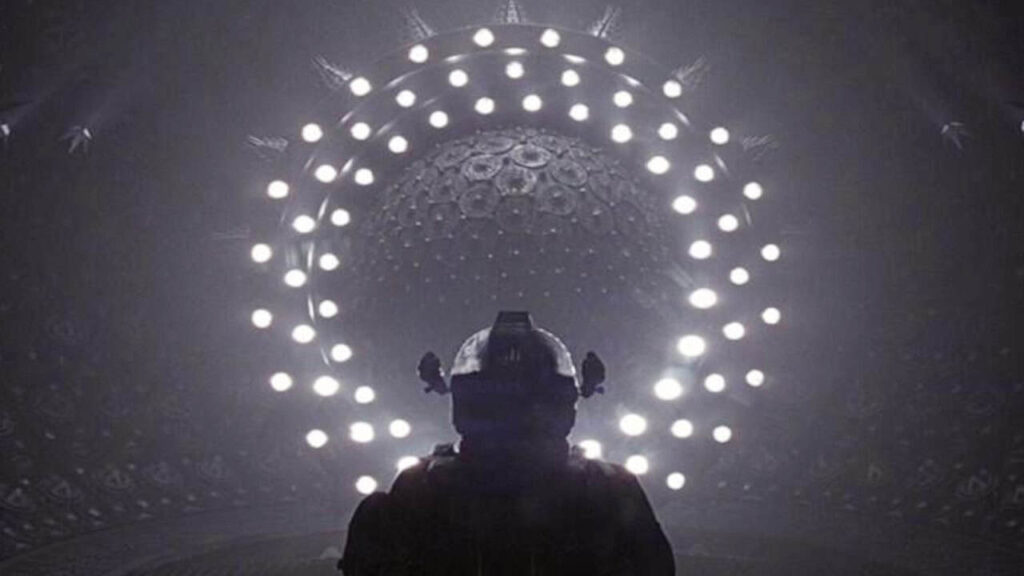By Jonathan Klotz
| Published
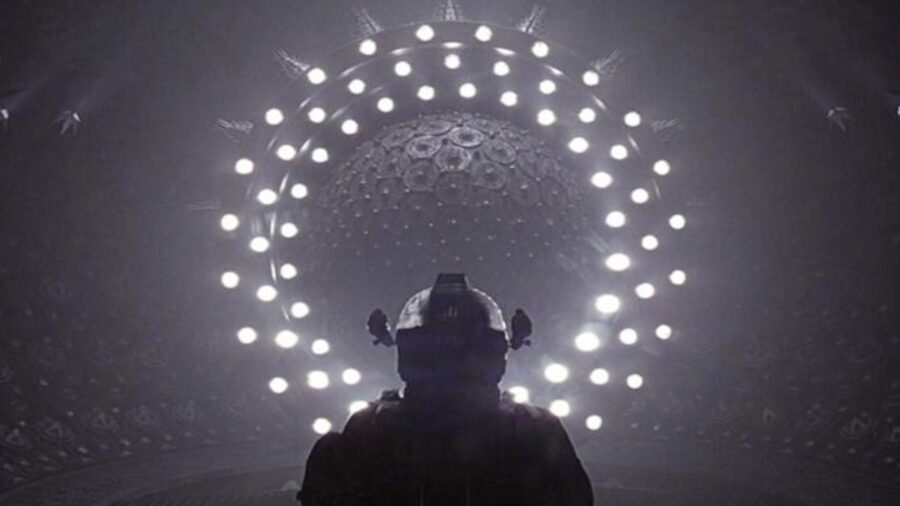
Fan theories can range from the plausible and very likely, such as the “Pixar connected universe,” or “Elsa and Anna’s brother is Tarzan,” to the unbelievable, “Snowpiercer’s Wilford is Wily Wonka,” or “Jar Jar Binks is a Sith,” but there’s one that’s so perfect, it has to be true: Event Horizon is set in the Warhammer 40k universe. This theory makes sense from the very beginning, when the titular spaceship activates its gravity engine and travels through a nightmarish dimension that’s full of demons and cosmic horrors. That’s exactly how ships travel in the world of Warhammer 40k, and it’s only the start of the connections.
Event Horizon Travelled Through The Warp
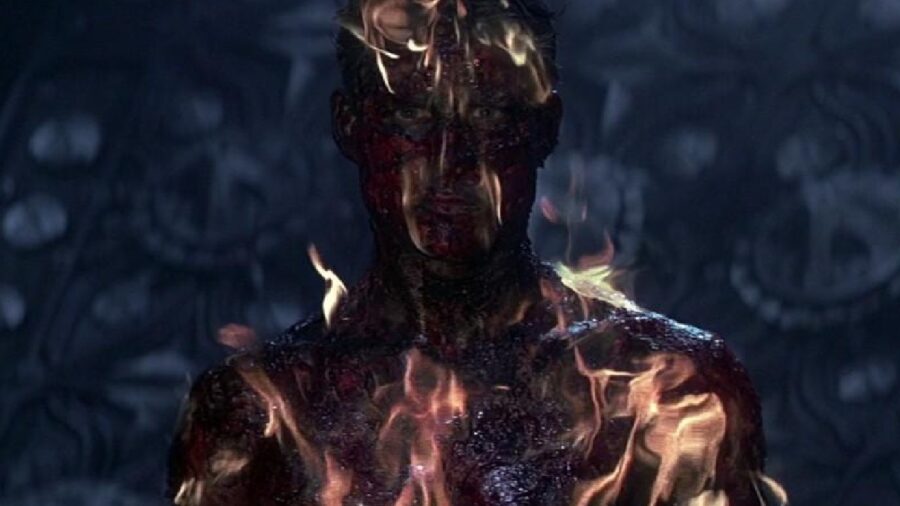
Event Horizon takes place after the ship mysteriously reappears after it was missing for years, with the entire crew dead, and as the Captain’s log reveals, it was the crew themselves that turned violent and killed each other. The Captain, having ripped out his own eyeballs, issues a warning, in Latin of course, to “Save yourself from Hell.” It’s a gruesome, bloody sequence filled with rapid flashes of violence that make it hard to focus, and the first time seeing the film, it’s hard to comprehend what you’re even seeing.
The rescue crew ends up giving into the spreading madness themselves, or rather, Dr. Weir (Sam Neill, the perfect star for a film about cosmic horror), the designer of the Event Horizon, goes mad and has to be put down by the rescue ship’s Captain Miller (Laurence Fishburne). And he is, but after he’s sucked into space, Weir comes back having embraced the strange and bizarre Hell-like dimension, and he taunts Miller by showing him visions from the Hell dimension. It’s a dark and disturbing moment, but it’s also an amazing live-scene depiction of Warhammer 40ks The Warp, a strange dimension in which time and space have no meaning, that happens to be filled with Daemons and, in Games Workshop’s universe, is used by humanity as an intergalactic superhighway.
The Influence Of Chaos
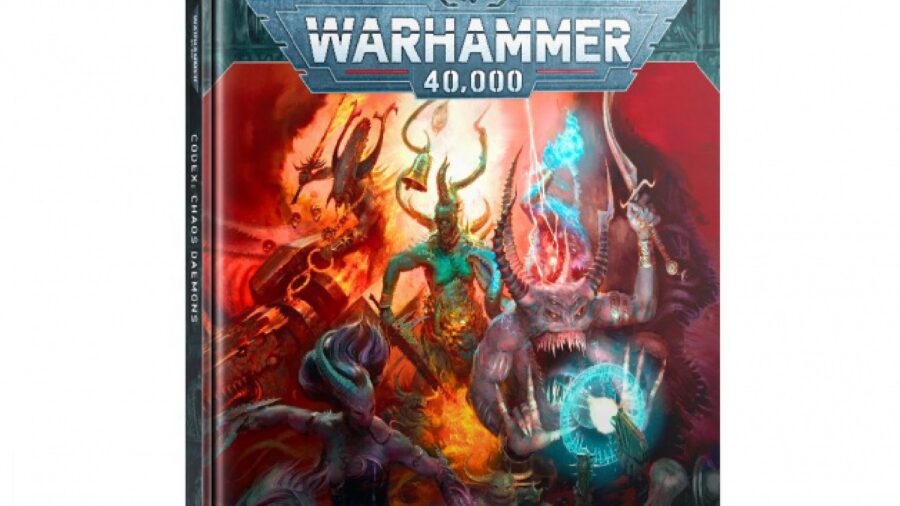
The Warp is a dangerous dimension that exists outside of four-dimensional space but it’s also able to be navigated by psychic humans called Navigators that use the Astronomican, a massive psychic beacon waypoint that you think of as a transdimensional lighthouse, to remain safe while traveling through. In Event Horizon, set in the year 2048, it’s the experimental gravity engine that pulls the ship out of our reality and into The Warp, making it humanity’s first experience with Chaos Deamons and the horrors that lurk outside our universe. Those dangers include the Chaos Gods, Tzeentch, Khorne, Nurgle, and Slaanesh, and amazingly, Paul W.S. Anderson’s sci-fi horror even implies the influence of these beings on the ship’s original crew.
While the rescue crew from the Lewis and Clark is watching the original Captain’s video, it’s clear that the crew is killing each other (that would be Khorne, the Blood God, encouraging slaughter and destruction), but at the same time, it’s clear that Slaanesh, the Prince of Pleasure, is involved since some of the crew to be “enjoying” themselves. The other two, Tzeentch and Nurgle, may be sitting this one out, but Event Horizon includes one other storybeat that touches on the technology of Warhammer 40k. Weir implies during the back half of the film that the ship itself has become possessed by a Deamonic spirit, and of course, that’s a huge part of the Warhammer 40k setting where humanity believes machine spirits power all machines. ]
The Machine Spirits

In the grim darkness of the far future in Warhammer 40k, technology is incredibly advanced, but also oddly primitive, with Tech Priests rubbing ointments and saying prayers over military vehicles before they go to war as a way to embolden the machine spirits within. The denizens of The Warp are able to possess technology and infect with their own Daemonic spirits, giving players the option to use twisted versions of the Imperium of Man’s own weapons against them. If that sounds like exactly what happens to the ship in Event Horizon, well, that’s another reason why this is secretly a Warhammer 40k film.
The Event Horizon fan theory may not even be a fan theory, and is instead confirmed thanks to screen writer Philip Eisner commenting on Twitter in 207 that “I played the sh*t out of 40K, so it was definitely an influence, conscious or otherwise.” Writers who went on to work at Games Workshop to help shape the universe returned the favor, with an attempt to name drop the ship in one of the game’s official codexes, but the U.K.-based company stopped it from seeing print. Still, it’s a comment straight from the twisted mind behind the film that the classic tabletop miniatures game’s gothic setting had an impact on the film.
Event Horizon Is A Gateway To Warhammer 40k
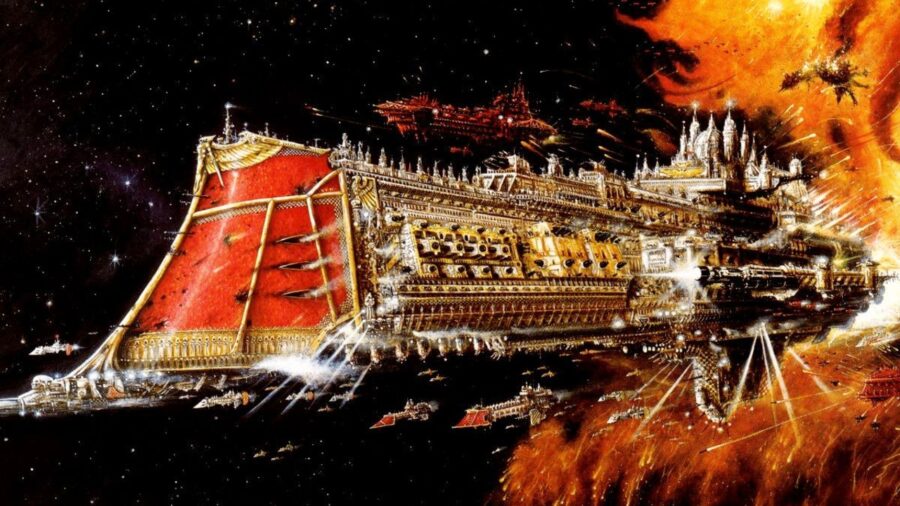
When Henry Cavill and Amazon bring Warhammer 40k to life, it won’t look like Event Horizon, but there’s no doubt that, intentionally or not, the 1997 sci-fi horror is the perfect companion piece to the grimdark future franchise. If you enjoy the movie, there are multiple Black Library novels out there that you should check out, starting with Xenos by Dan Abnett, the first of the Eisenhorn novels, which isn’t nearly as bloody and gruesome as the movie, but it nails the dark, ominous feeling of something being very, very wrong that first half of the movie does so well.
The Event Horizon/Warhammer 40k fan theory has existed since the film first hit theaters, over a decade after Games Workshop released Rogue Trader, the first game set in the world of 40k. It’s been an enduring fan theory because it honors both the film and the gaming franchise, and it doesn’t demand either one of them, and simply says, “hey, this would be really cool.” The best fan theories are just that, they’re fun, but this time around, the Sam Neill horror film is also a perfect introduction to how crazy the Warhammer 40k setting can get, and given the cost of running a well-painted 3,000 point competitive army, that might be the most horrifying part of the movie.

